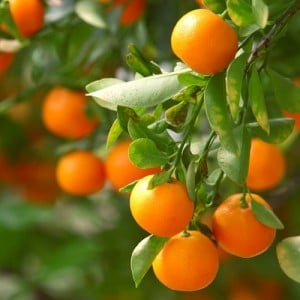An empty greenhouse stands beckoning in your yard, waiting to be stocked with plants, but you aren’t sure what plants to choose. Don’t allow yourself to go into “brain freeze”. Starting asking questions: Do you fill your greenhouse with orchids, other flowering plants, fruiting vines, cactuses, herbs, vegetables, or even small fruit trees? There are so many options that it’s hard to make up your mind. But if you wait too long to make a decision, summer will be over, winter cold will be setting in, and the ideal time to stock your greenhouse may have passed. So now is the time to carefully consider what you want to grow. Over the next few postings, we’ll look at many different possible greenhouse plants and what each requires in terms of care, temperature range, and light.
 Remember, though, that you needn’t focus on only one type of plant in your greenhouse. You can grow a great variety of plants even though each requires somewhat different conditions. My winter-heated greenhouse contains cactuses, citrus trees, tropical and non-tropical flowering plants (such as Cape primroses, begonias, and mandevilla vines), tropical and local herbs, kiwi fruit, and a hydroponic setup for winter lettuce and other greens. During summer, when greenhouse temperatures can rise to over 100°F, most of these plants are placed outdoors on the patio, where they thrive.
Remember, though, that you needn’t focus on only one type of plant in your greenhouse. You can grow a great variety of plants even though each requires somewhat different conditions. My winter-heated greenhouse contains cactuses, citrus trees, tropical and non-tropical flowering plants (such as Cape primroses, begonias, and mandevilla vines), tropical and local herbs, kiwi fruit, and a hydroponic setup for winter lettuce and other greens. During summer, when greenhouse temperatures can rise to over 100°F, most of these plants are placed outdoors on the patio, where they thrive.
If you’re like me and want to grow a diversity of plants in your greenhouse, your first step is to determine the microclimates that exist there because the growing conditions are seldom identical from one area to another. For  example, the area at the back of my winter-heated greenhouse is the black-painted garage wall, which heats up quickly in the early morning and stays warm for most of the day. This spot is ideal for plants that like a little shade but need to stay warm, including my begonias and Cape primroses (Streptocarpus plants). Similarly, during winter, areas at different distances from a greenhouse heat source will have different degrees of warmth and perhaps also dryness, making each area more or less suited to different plants. For instance, in my greenhouse during winter I put my citrus trees near the heater because they require warmth, whereas my fig and olive trees, which are much more cold-tolerant, can be placed far from the heater, where the temperature is significantly lower. Identifying and properly utilizing such microclimates in your greenhouse is one of the keys to successful glasshouse gardening. No greenhouse is ever a completely uniform environment. Recognizing this fact, and putting it to use, will help you to grow a diversity of greenhouse plants.
example, the area at the back of my winter-heated greenhouse is the black-painted garage wall, which heats up quickly in the early morning and stays warm for most of the day. This spot is ideal for plants that like a little shade but need to stay warm, including my begonias and Cape primroses (Streptocarpus plants). Similarly, during winter, areas at different distances from a greenhouse heat source will have different degrees of warmth and perhaps also dryness, making each area more or less suited to different plants. For instance, in my greenhouse during winter I put my citrus trees near the heater because they require warmth, whereas my fig and olive trees, which are much more cold-tolerant, can be placed far from the heater, where the temperature is significantly lower. Identifying and properly utilizing such microclimates in your greenhouse is one of the keys to successful glasshouse gardening. No greenhouse is ever a completely uniform environment. Recognizing this fact, and putting it to use, will help you to grow a diversity of greenhouse plants.










